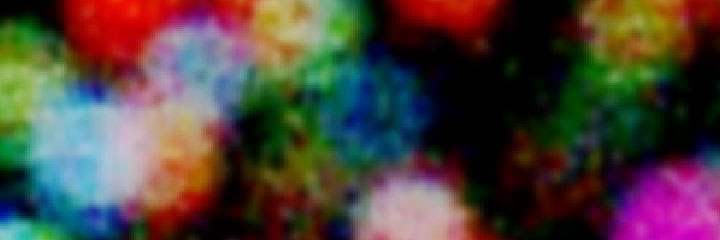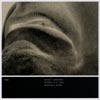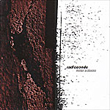
 |
| MAIN PICTURES REVIEWS DISCOGRAPHY INTERVIEWS ARCHITECTURE EDUCATIONAL DOWNLOADS BIO |
Francisco López / Scott
Arford |
This double CD pairs two
of the most eminent manipulators of expansions and contractions born from
a competent work on electroacoustic derivations. In "SSF", Lopez
explores a vast dynamic range, his phenomenal experience on the thresholds
of audibility partially put aside in favour of a painstaking process of
impressive modifications and overwhelming energies whose effect is comparable
to a separation of your senses. Torrents of electricity, pumping lows
and shattering vibrations take this music to the highest level of magnitude,
putting Lopez's work in the same rank of John Duncan's and Daniel Menche's
best; this is one of the most complete compositions I've heard from Francisco,
his controlled disorder also being a powerful means of self-introspection.
Arford's "SSS" fuses more concrete sources with equally awesome
low-frequency engineering; as opposed to his Spanish counterpart, Scott's
scenarios change abruptly, often surprisingly after our psyche is lulled
during long moments of semi-displacement. Arford places his morphing sounds
in an evolving framework of resonant interferences, hisses and utterances
that have "anxiousness" spelled all over the place. Getting
the brain and the auricular membranes used to this shifting bubbling takes
its time - but once you learn going with this overloaded flow, the reward
in terms of nerve power is a sure thing.
|
Scott Arford |
Shortwave music bears lots of
intriguing contrasts: we experience apprehension and relaxation in equal
measure, according to the matching of timbral colours, the element of surprise,
the composer's attitude towards the exploitation of a pure source in opposition
to heavy studio treatment. In this sense, "Radio station" by Scott
Arford is a very balanced album; the sounds are thoroughly captivating in
their non-confrontational homogeneity, yet maintain a halo of secrecy which
distances the overall result from what one could expect from similarly conceived
works. Developing a personal aesthetic which finds common elements with
the experiments by John Duncan and Daniel Menche - particularly in the use
of conglomerates of throbbing pulses and sub-frequency vibrations - Arford
manages to highlight the most inherent "musical" nature of a highly
fascinating cause of aural enjoyment. www.touchingextremes.org (Italy), 2005 In the Bay area he's quite well-known, Scott Arford, operator of the 7HZ label, video artist, musician and collaborator of Francisco Lopez, Randy Yau and Micheal Nine. His output however is quite small. 'Radio Station' is his latest work, and it deals with one of the easiest to obtain sound sources: radio sounds. Not the speech type, or plunderphonica, but everything in between the stations - the cracks, the static, the hiss. Arford is not a sensitive man: whatever he finds on the radio waves he uses, but with a high intensity. His work is not about careful, delicate sounds, but a rather forceful, mean and loud mixture of waves crumbling over each-other, falling apart, chopped up. Not really moments of silence and contemplation here, but on the other hand, Arford isn't interested in doing 'just' a bunch of noise either. He knows how to make a strong, vivid collage of sound out of these radio station and how to make a forceful, interesting piece of music. Energetic and present.The use of radio sounds may not be entirely new, the results of Arford are certainly very very nice. Vital Weekly (The Netherlands, 2005) Tune into the shortwave bands in and around San Francisco and you're likely to discover little more than static, hiss and electrical interference broken up by an occasional transmission from a libertarian wacko in the Santa Cruz mountains. Scott Arford has spent his entire carrer manipulating a similar static from televisions in his searing audiovisual installations ans perdormances, so it makes perfect sense for him to begin investigating his hometown's cracked ether. Just as he does through his jacked up TV's, he seeks only the most caustic radio signals as his source material and aggresively cobbles together jagged layers of hotwired sound. In many ways, Arford picks up where John Duncan and Daniel Menche - particularly in the use of conglomerates of throbbing pulses and sub-frequency vibrations - Arford manages to highlight the most inherent "musical" nature of a highly fascinating cause of aural enjoyment. Jim Haynes The Wire (UK), 2006 Scott ARTFORD, musicien résident à San Francisco manipule depuis une poignée d'années les problématiques autour des médias, de leur usage et des procédés d'émissions attenants. Il participe, aux côtés d'autres intervenants du son (Daniel Menche, Joe Colley, Francisco Lopez, Zbgniew Karkowski, Masako Tanaka, Tom Novak, etc. à creuser la matière du son, à en repousser les frontières, à en " borner " les limites. Ici, comme pour la toute récente double compilation de Cronica, Artford expérimente sur la radio, explore les strates parallèles des sonorités (et des non-sonorités) qui s'y cachent, traquent les no man's land sonores de bruits blancs entre chaque plage pour construire son projet. Excessivement expérimentales, ses pièces n'en demeurent pas moins narratives dans leur déroulement, privilégiant une sorte de cinématique de teintes sépias. Jade (France), 2005 One of the leading figures of new media arts in the San Francisco Bay Area, Scott Arford, released a noise album on the label Antifrost. Radiostation as it is called, contains no easy-listening music, but digitalized noise that seems to come in fast and resolute streams. The third track seems to offer some occasional voice samples (scanned space travel conversations) hidden in the background. All kind of static noise frequencies have been structured into turbulent streams. The listener has no clue what the origins of the sounds used are, but the overall impression is that of digitalized dust storms and outerworld sound combinations. Phosphor (Netherlands, Germany), 2006 |
Scott Arford / Randy H.Y. Yau |
Sound/video artist Scott Arford
(7hz, Radiosconde) and audio artist/sound curator Randy H.Y. Yau (23five
Incorporated) have collaborated on a wired recording of intense depth. The
four tracks on Edit for Unconsciousness evidence a rambling range of sensibility
with a hint of Tetuo Furudate here and a dollop of Kapotte Muziek there.
Arford’s "Drift Counter" is a white wash of buzzer noise
and open mic sizzle. At about 23 minutes the isolated energy of the mower-like
sonics freeze my subconscious for a moment and stir-fry it back up again.
Working in multimedia these gentlemen have collaborated on a work that uses
mid-tones of feedback to inform, not shock and destroy. The title has film/video
references as I could imagine this extended sound mirage as being integral
to a performance piece including dance, light and the moving image (however
slowly). Drops of threatening noise taunt in Yau’s long-player "Second
Coming," like a griddling of some type of hovering being that gets
caught in the radiant glow of drone. The track climaxes to a gas-like explosion
which melts all in its course to the din of reverberation. Edit for Unconsciousness
also includes Arford’s barely grounded "Headworms," originally
released as part of a split mini-CD with the Haters. The piece has a molten
core slow-roasting all in/outputs. Yau’s "Realia" opens
this recording with a quick-cut-up cum slow perk approach. Its mild side
is nothing if not an eerie message from a force outside of our realm. Suddenly
the plug is pulled and wavers out in slow motion. The drama invigorates
and has the ability to give you the shakes – play this one loud for
full-on bravado! T.J. Norris Igloo Magazine (USA), 2006 In response to the incendiary buzzes and periodic electrified gasps of sharp noise emanating from the stereo at the front of the store, Andee had to wonder if Aquarius had unbeknownst to him started offering free tattoos with every purchase. Unfortunately, such a service is out of our league (sorry) and the noises in question originated from the exceptional split release from Bay Area composers Scott Arford (aka Radiosonde) and Randy Yau. As directors for the 23five sound arts organization, Arford and Yau have been quite active promoting an assortment of experimental and noise artists through their annual 'Activating The Media' festivals and the sporadic performances at 7Hz. Their "Edit For Unconsciousness" disc proves that Arford and Yau are not merely noble benefactors, but also worthy sonic comrades with John Duncan, Zbigniew Karkowski, and Francisco Lopez (all of whom have graced San Francisco with 23five's help). Yau opens the procedings with a muscular application of the Carsten Nicolai / Mika Vainio glitch, as jagged static cracklings collapse into low end rumblings and nervous electrical tones. Arford's follow-up incorporates similarly tense cracklings, but releases them into expansive swells of grey noise. Gradually the record's tension disperses and the lines between whose sound is whose dissolve, as the electrical hissing previously mentioned as replicating the rapid machinations from a tattoo gun slowly take over, softening further into hypnotic vibrations. Very impressive. Aquarius Records, (USA) |
| Scott Arford / Randy H.Y. Yau
/ Michael Nine "7HZ" (CD Auscultare Research, 2001)  |
Operating in the legendary Cyclone
warehouse space near Hunter's Point in San Francisco, 7hz has functioned
as one of the few SF venues that is exclusively dedicated to experimental
sound art, and also has served as the live / work spaces (in the truest
sense of the term) for Scott Arford (aka Radiosonde), Randy Yau (23five),
and Michael Nine (aka Death Squad). During the fall of 2002, 7hz took their
show on the road, as Arford, Yau, and Nine embarked on a European tour.
This disc is essentially the tour support album, offering an exclusive sampling
of each artist's work. Arford's sonic reconstitutions of video static have
made for stunning audio / visual performances (almost unheard of in the
visually sterile realm of laptop composition). Here, his contributions spit
forth digitally corrosive bits of static and noise (which resemble remote
control / shortwave detritus) along mechanized grids. Altogether, Arford's
tracks resemble the pained electric noise of those collaborations between
Zbigniew Karkowski and Pita Rehberg. Yau defines his work as an "action
concrete," in which recordings of impromptu vocal outbursts have been
dissected and reanimated through a number of electro-acoustic techniques,
often sounding like a mutation of Robert Ashley's classic "Automatic
Writing" with far more jarring and confrontational results. Michael
Nine's work comes out of the Whitehouse / Con-Dom approach of primitive
noise assaults as transgressive theater. All in all, an excellent introduction
to these San Francisco artists. Aquarius Records, (USA) |
| Radiosonde "Meter Sickness" (CD, Ground Fault, 1999)  |
The finest album of 1999 [Rating
5 Stars] |